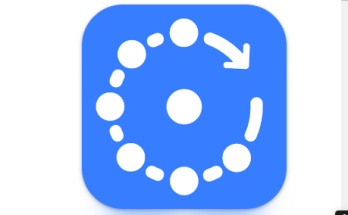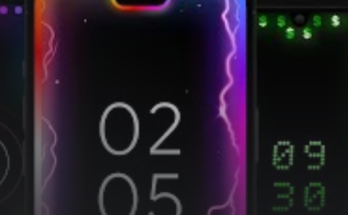Button Shortcut in Smart Phones Welcome to the world of button shortcuts! In this fast-paced digital era, where time is of the essence, finding ways to navigate and optimize your smart phone usage becomes crucial. That’s where button shortcuts come into play. These nifty little hacks can revolutionize the way you interact with your device, saving you precious seconds and streamlining your mobile experience.
Imagine being able to perform certain tasks or access specific features on your smart phone with just a single tap or swipe. With button shortcuts, this convenience is at your fingertips – quite literally! Whether you’re a tech-savvy enthusiast always searching for efficiency or simply someone looking for ways to simplify their daily routine, mastering these shortcuts will undoubtedly enhance your smartphone usage.
So buckle up and get ready as we delve into the world of button shortcuts in smart phones. We’ll explore their benefits, different types available, how to set them up effectively, tips for customization, debunking common misconceptions surrounding them and finally conclude with why they are an indispensable tool in optimizing our digital lives. Let’s dive right in!

Benefits of Using Button Shortcuts
Button shortcuts in smartphones offer a multitude of benefits to users, making navigation and multitasking quicker and more efficient. These shortcuts allow you to perform various tasks with just a single tap or press, saving you time and effort in the long run.
One major benefit of using button shortcuts is improved productivity. With just a few taps, you can launch your favorite apps instantly or access important functions like taking screenshots or adjusting volume without having to navigate through multiple menus. This streamlined process helps you complete tasks faster and stay focused on what matters most.
Another advantage is enhanced accessibility. Button shortcuts provide an easier way for individuals with physical disabilities to interact Button Shortcut in Smart Phones with their devices. By customizing these shortcuts based on their specific needs, they can effortlessly carry out essential actions such as opening apps, making calls, or turning on accessibility features.
Additionally, button shortcuts contribute to a personalized user experience. You have the freedom to customize the buttons according to your preferences and frequently used functions. Whether it’s launching a camera app by double-pressing the power button or activating voice commands by pressing the home button twice, these customization options allow you to tailor your smartphone’s functionality precisely how you want it.
Moreover, utilizing button shortcuts can also help extend battery life. Instead of waking up your device every time you need quick access to certain features or apps, assigning them specific buttons reduces screen-on time and conserves battery power in the long run.
Incorporating button shortcuts into your smartphone routine brings about several advantages: increased productivity through streamlined navigation; improved accessibility for all users; personalization options that match individual preferences; and potential energy savings leading to extended battery life.
Types of Button Shortcuts in Smart Phones
Types of Button Shortcuts in Smart Phones
Smartphones have become an essential part of our daily lives, helping us stay connected and organized. One feature that makes smartphones even more convenient to use is the button shortcuts. These shortcuts allow users to perform certain actions or access specific apps with just a press of a button.
There are different types of button shortcuts available on smartphones, depending on the brand and model. One common type is the home button shortcut, which allows users to set up quick access to their favorite apps or frequently used features directly from the home screen.
Another type is the volume key shortcut, where users can assign specific functions to the volume buttons. For example, you can set it up so that pressing the volume down button takes a screenshot, or long-pressing it opens the camera app.
Some smartphones also offer dedicated hardware Button Shortcut in Smart Phones buttons for certain functions like launching voice assistants or taking photos. These buttons can be customized based on your preferences and usage patterns.
Additionally, there are gesture-based shortcuts that utilize swipes and taps on different parts of the screen. For instance, double-tapping on the lock screen could launch your favorite music player instantly.
By utilizing these various types of button shortcuts in smart phones, you can save time and streamline your user experience by accessing frequently used features quickly and efficiently.
How to Set Up and Use Button Shortcuts
Next, select the specific button you want to assign a shortcut to. You will then be prompted to choose an action or function that will be triggered by pressing that particular button. This could range from launching your favorite app or performing a specific task like taking a screenshot.
After selecting the desired action for the shortcut, save your changes and exit out of the settings menu. Now when you press that assigned button on your smartphone, it will instantly perform the designated action without having to navigate through multiple screens.
Using these button shortcuts can significantly speed up everyday tasks on your smartphone and make accessing certain features more convenient than ever before. Whether it’s opening your camera quickly with just one press or launching Google Maps in an instant with a double tap of a key – these shortcuts are designed to simplify our lives.
So why not take advantage of this feature? Experiment with different combinations and discover which ones work best for you! By customizing button shortcuts according to your preferences and needs, you’ll find yourself navigating through apps faster than ever before!
Remember though – while setting up these handy shortcuts Button Shortcut in Smart Phones may seem easy enough at first glance – it might take some getting used to initially incorporating them into our daily routines. But once mastered – they become second nature!
With just a little bit of time spent upfront configuring these helpful tools according to personal preference – we’ll soon wonder how we ever managed without them! So go ahead – give it try today! Your smartphone experience will never be the same again!
Customizing Button Shortcuts for Efficiency
Customizing Button Shortcuts for Efficiency
One of the greatest advantages of using button shortcuts on your smart phone is the ability to customize them according to your own preferences. This customization allows you to tailor your device to work more efficiently for you, saving both time and effort.
When it comes to customizing button shortcuts, there are endless possibilities. You can assign specific actions or applications to different buttons, making it easier than ever before to access your most frequently used features with just a tap.
For example, if you find yourself regularly sending text messages or making calls, you can set up a shortcut that takes you directly to the messaging or dialer app. No more scrolling through numerous screens or searching through countless icons – everything you need is right at your fingertips!
Furthermore, customizing button shortcuts can also help streamline certain tasks. If there’s a particular combination of settings that you often switch on and off (such as Wi-Fi and Bluetooth), assigning a shortcut will allow you to toggle these options in an instant.
In addition, by personalizing your button shortcuts, you can prioritize what matters most to you. Maybe photography is important; in that case, setting up a shortcut for quick access to the camera app would be beneficial. Or perhaps productivity apps like note-taking software are crucial – simply assign them their own dedicated shortcut.
Customizing button shortcuts empowers users by putting control in their hands. It eliminates unnecessary steps and simplifies navigation within the phone’s interface – all leading towards improved efficiency and user satisfaction.
So go ahead! Explore the settings on your smart phone today and start harnessing the power of customized button shortcuts for enhanced productivity on-the-go!
Common Misconceptions about Button Shortcuts
Common Misconceptions about Button Shortcuts
Button shortcuts have become a staple feature in smartphones, Button Shortcut in Smart Phones allowing users to perform various tasks with just a few taps. However, there are some common misconceptions surrounding button shortcuts that need to be addressed.
One misconception is that button shortcuts are complicated and difficult to set up. In reality, most smartphones have built-in options for setting up button shortcuts, making the process quick and easy. With just a few simple steps, you can assign specific actions to different buttons on your phone.
Another misconception is that button shortcuts are only useful for tech-savvy individuals or advanced smartphone users. This couldn’t be further from the truth! Button shortcuts are designed to enhance user experience and make tasks more efficient for everyone. Whether you’re a beginner or an experienced smartphone user, utilizing these shortcuts can greatly improve your productivity.
Some people believe that using button shortcuts will slow down their device or cause it to freeze. However, modern smartphones are equipped with powerful processors and ample memory to handle such tasks without any issues. The implementation of button shortcuts is optimized by manufacturers to ensure smooth performance.
Additionally, some individuals worry that customizing button shortcuts may result in accidental triggers or unwanted actions. While this concern is valid, most smartphones offer customization options that allow users to set specific conditions or gestures required for activating the shortcut. This minimizes the chances of accidental activations.
In conclusion…
These common misconceptions often deter users from fully exploring the potential benefits of using button shortcuts on their smartphones. By debunking these myths and understanding how they actually work, you can take full advantage of this convenient feature and streamline your mobile experience like never before!
Conclusion
Smartphones offer various types of button shortcuts to cater to different user preferences. Whether it’s assigning specific actions to physical buttons like volume keys or creating gestures on the touch screen, there are options available for everyone. Take some time to explore these features and find the ones that work best for you.
Setting up and using button shortcuts is a breeze on most smartphones. Head over to your device’s settings menu and look for the “Button Shortcuts” or similar option. From there, you can assign actions to specific buttons or create custom gestures according to your needs. Experiment with different combinations until you find what suits you best.
To truly make the most out of your smartphone’s capabilities, don’t forget about customization! Most devices allow users to customize their button shortcuts based on personal preferences or frequently used apps/functions. By tailoring these shortcuts specifically for your needs, you’ll be able to navigate through your phone with lightning speed.
Despite their numerous advantages, there are still some misconceptions surrounding button shortcuts in smartphones that need debunking. Some people may think they’re too complicated or unnecessary – but nothing could be further Button Shortcut in Smart Phones from the truth! Once set up correctly, these shortcuts become second nature and enhance our overall mobile experience significantly.
In conclusion (without explicitly stating so), incorporating button shortcuts into our daily smartphone usage can revolutionize how we interact with our devices. The time-saving benefits, ease of use, and customization options make them invaluable tools.



